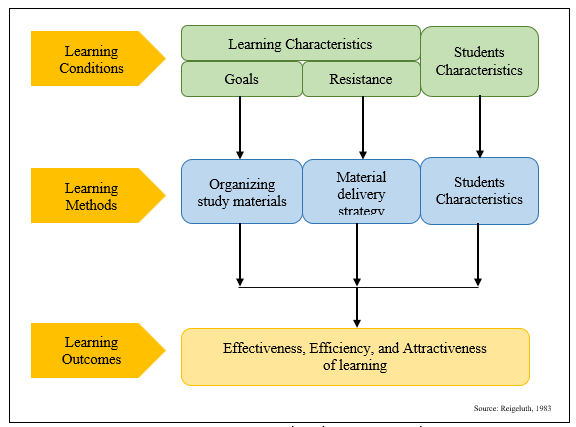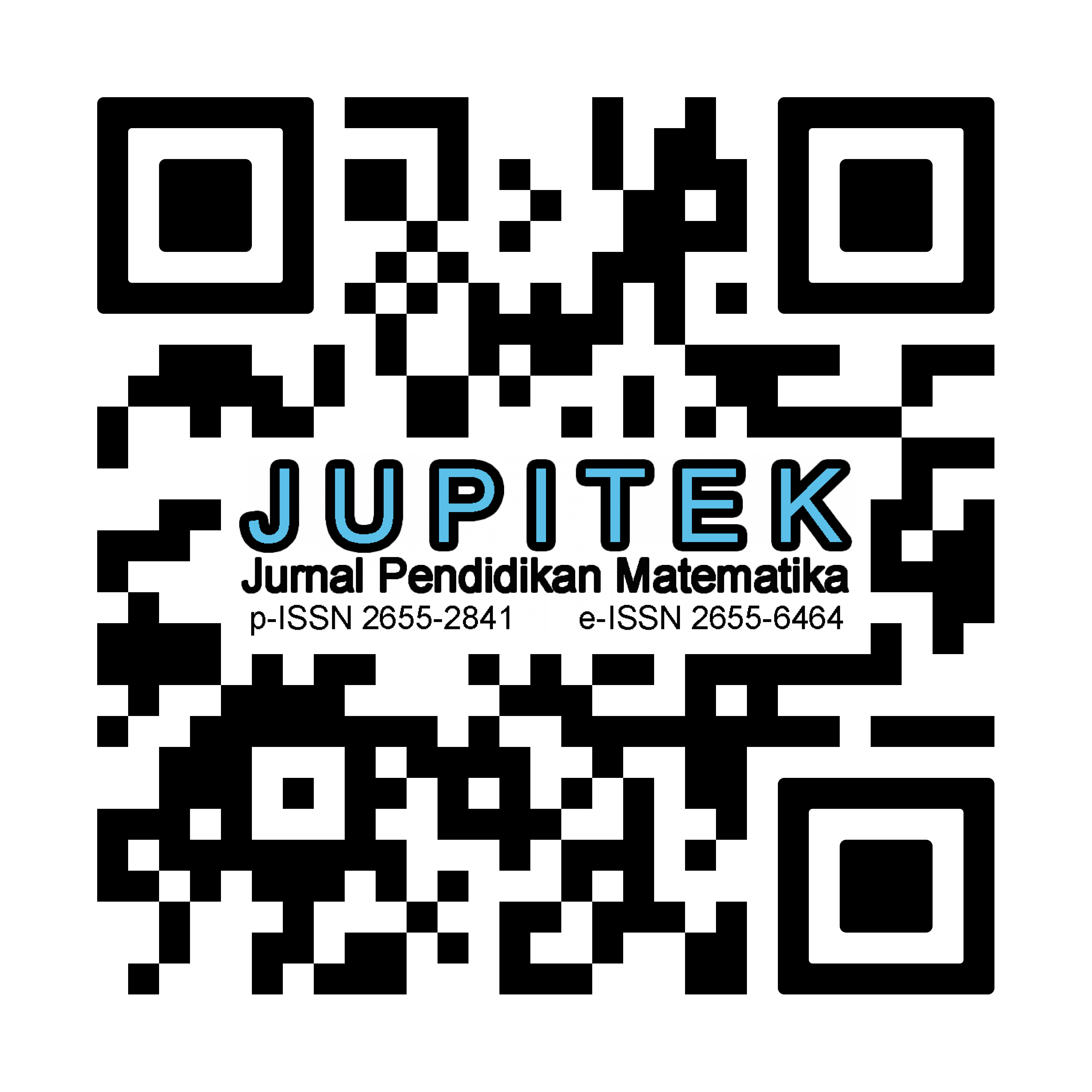ONLINE MATHEMATICS LEARNING STRATEGY APPROACH: TEACHING METHODS AND LEARNING ASSESSMENT
Abstract
The primary focus of this research is to develop strategies aimed at identifying effective methods applicable to online mathematics instruction and assessment. Teaching through distance education has many challenges, requiring educators' adeptness in utilizing e-learning platforms for both instructional delivery and assessment purposes. This study adopts a literature review methodology, drawing upon various previous studies relevant to this subject matter. The research findings reveal several online mathematical strategies and assessment techniques envisioned to adequately measures students' capacity to discern complex issues and employ critical thinking to resolve mathematical problems. The important role of the educator as a facilitator is underscored in crafting learning materials synchronized to the needs of students navigating the online platform. In this context, online mathematics instructional strategies are intricately intertwined with pedagogical dimensions and the appropriateness of utilized media and assessment modalities. Emphasizing interactive, creative, and innovative learning emerges as a critically important characteristic, particularly within the realm of online mathematics instruction
Downloads
References
Anhalt, C. O., Staats, S., Cortez, R., & Civil, M. (2018). Mathematical Modeling and Culturally Relevant Pedagogy (pp. 307–330). https://doi.org/10.1007/978-3-319-66659-4_14
Aprida, P., & Dasopang, M. D. (2017). Belajar Dan Pembelajaran. Fitrah: Jurnal Kajian Ilmu-Ilmu Keislaman, 3(2), 333. https://doi.org/10.24952/fitrah.v3i2.945
Barbosa, H., & Garcia, F. (2005). Importance of Online Assessment in the E-learning Process. 6th International Conference on Information Technology Based Higher Education and Training, F3B-1-F3B-6. https://doi.org/10.1109/ITHET.2005.1560287
Belmonte, J. L., Cabrera, A. F., Núñez, J. A. L., & Sánchez, S. P. (2019). Formative Transcendence of Flipped Learning in Mathematics Students of Secondary Education. Mathematics, 7(12), 1226. https://doi.org/10.3390/math7121226
Bliss, K., & Libertini, J. (2016). What is mathematical modeling. In: Guidelines for Assessment and Instruction in Mathematical Modeling education (GAIMME). . SIAM Society for Industrial and Applied Mathematics, 23, 7–21.
Blum, W. (1996). Anwendungsbezüge im Mathematik-unterricht—Trends und Perspektiven. In Schriftenreihe Didaktik der Mathematik (pp. 15–38). HölderPichler-Tempsky.
Borowczak, A. C. B., & Slater, T. F. (2015). A Proposed Integrated STEM Framework for Contemporary Teacher Preparation. Teacher Education and Practice, 28(2), 318–330.
BPS. (2018). Statistics of Education 2018.
Bybee, R. W. (2013). The case for STEM education: Challenges and opportunity. National Science Teachers Association (NSTA) Press.
Cooper, R., & Heaverlo, C. (2013). Problem Solving and Creativity and Design: What Influence Do They Have on Girls’ Interest in STEM Subject Areas? American Journal of Engineering Education, 4(1), 27–38.
Dede, A. T. (2019). Arguments constructed within the mathematical modelling cycle. International Journal of Mathematical Education in Science and Technology, 50(2), 292–314. https://doi.org/10.1080/0020739X.2018.1501825
Dhull, I., & Arora, S. (2017). Online Learning. International Education & Research Journal [IERJ], 3(8).
Doğan, M. F., Şahin, S., Çavuş, E. Z., & Gürbüz, R. (2018, June 27). Investigation of teachers’ awareness of interdisciplinary mathematical modeling problem. International Conference on Mathematics and Mathematics Education (ICMME-2018).
Estapa, A. T., & Tank, K. M. (2014). STEM education network manual. The Institute for the Promotion of Teaching Science and Technology.
Estapa, A. T., & Tank, K. M. (2017). Supporting integrated STEM in the elementary classroom: a professional development approach centered on an engineering design challenge. International Journal of STEM Education, 4(1), 6. https://doi.org/10.1186/s40594-017-0058-3
EC. (2014). Report on Web Skills Survey: Support Services to Foster Web Talent in Europe by Encouraging the use of MOOCs Focused on web Talent—First Interim Report. Http://Openeducationeuropa.Eu/Sites/Default/Files/MOOCs-for-Web-Skillssurvey-Report.Pdf
Fitzallen, N. (2015). STEM Education: What Does Mathematics Have To Offer?
Fried, M. N. (2022). Models and Modelling: The Fine Balance between Mathematics, Practice, and Research. Mathematical Thinking and Learning, 24(2), 176–180. https://doi.org/10.1080/10986065.2022.2056676
Givry, D. (2003). Étude de l’évolution des idées des élèves de seconde durant une séquence d’enseignement sur les gaz.
Hattie, J., & Yates, G. C. R. (2013). Visible Learning and the Science of How We Learn. Routledge. https://doi.org/10.4324/9781315885025
Huhtanen, A. (2019). The Design Book for Online Learning (FITECH). Practical Tools For Designing High-Quality Online Learning. Aalto University.
Kurt, S. (2018, May). Fully and Partially Online Courses: Definitions. Educational Technology.
Maass, K., Geiger, V., Ariza, M. R., & Goos, M. (2019). The Role of Mathematics in interdisciplinary STEM education. ZDM, 51(6), 869–884. https://doi.org/10.1007/s11858-019-01100-5
Mason, R. (2000). From distance education to online education. The Internet and Higher Education, 3(1–2), 63–74.
Moreno-Guerrero, A.-J., Marina, R. G., Heredia, N. M., & Rodríguez-García, A.-M. (2020). Collaborative Learning Based on Harry Potter for Learning Geometric Figures in the Subject of Mathematics. Mathematics, 8(3), 369. https://doi.org/10.3390/math8030369
Muhtadi, D., Wahyudin, Kartasasmita, B. G., & Prahmana, R. C. I. (2017). The Integration of technology in teaching mathematics. Journal of Physics: Conference Series, 943, 012020. https://doi.org/10.1088/1742-6596/943/1/012020
Naidu, S., & Oliver, M. (1999). Critical incident-based computer supported collaborative learning. Instructional Science, 27(5), 329–354. https://doi.org/10.1007/BF00892030
NCTM. (2000). National Council of Teachers of Mathematics (NCTM) Executive Summary.
Niedderer, H., Budde, M., Givry, D., Psillos, D., & Tiberghien, A. (2007). Learning Process Studies. In Contributions from Science Education Research (pp. 159–171). Springer Netherlands. https://doi.org/10.1007/978-1-4020-5032-9_12
Nipper, S. (1989). Third Generation Distance Learning and Computer Conferencing. In R. Mason, & A. Kaye (Eds.), Mindweave: Communication, Computers and Distance Education. Pergamon Press.
OECD. (2019). PISA 2018 Insights and Interpretations.
Petri, J., & Niedderer, H. (2003). Atomic Physics in Upper Secondary School: Layers of Conceptions in Individual Cognitive Structure. In Science Education Research in the Knowledge-Based Society (pp. 137–144). Springer Netherlands. https://doi.org/10.1007/978-94-017-0165-5_15
Psillos, D. (1999). Teaching fluids: intended knowledge and students’ actual conceptual evolution. International Journal of Science Education, 21(1), 17–38. https://doi.org/10.1080/095006999290813
Rahmatia, M., Monawati, M., & Damius, S. (2020). Pengaruh Media E-learning Terhadap Hasil Belajar Matematika Siswa. Jurnal Ilmu Pendidikan Guru Sekolah Dasar, 2(1), 212–227.
Reigeluth, C. M. (1983). Instructional Design Theories and Models (C. M. Reigeluth, Ed.). Routledge. https://doi.org/10.4324/9780203824283
Sadikin, A., & Hamidah, A. (2020). Pembelajaran Daring di Tengah Wabah Covid-19. BIODIK, 6(2), 214–224. https://doi.org/10.22437/bio.v6i2.9759
Salmon, G. (2013). E-tivities: The Key to Active Online Learning. Routledge. https://doi.org/10.4324/9780203074640
Stern, J. (2020). Introduction to online teaching and learning. Http://Www.Wlac.Edu/Online/Documents/Otl.Pd.
Stephenson, J. (2018). Teaching & Learning Online New Pedagogies for New Technologies (J. Stephenson, Ed.). Routledge. https://doi.org/10.4324/9781315042527
Tan, T. (2017). Teaching is an Art: Maximize Your Teaching. Deepublish.
Tezer, M. (2020). The Role of Mathematical Modeling in STEM Integration and Education. In Theorizing STEM Education in the 21st Century. IntechOpen. https://doi.org/10.5772/intechopen.88615
Yunita, Y., Ali, M., & Herawati, N. (2022). ISLAMIC CULTURAL HISTORY AS A LIFE PARADIGM. Nizham Journal of Islamic Studies, 10(1), 101. https://doi.org/10.32332/nizham.v10i1.4228
Zsohar, H., & Smith, J. A. (2008). Transition from the classroom to the web: successful strategies of teaching online. Http://Northeast.Edu/CTC/Pdf/Successful-Strategies-for-Teaching-Online.Pdf

Copyright (c) 2024 Maria Zefanya Sampe, Syafrudi Syafrudi

This work is licensed under a Creative Commons Attribution-NonCommercial-ShareAlike 4.0 International License.
License and Copyright Agreement
By submitting a manuscript to Jurnal Pendidikan Matematika (JUPITEK), the author(s) certify and agree to the following terms:
- Originality and Authority: The submitting author is authorized by all co-authors to enter into this agreement. The manuscript describes original work that has not been published previously in a peer-reviewed journal, nor is it under consideration for publication elsewhere.
- Approval: Its publication has been approved by all author(s) and by the responsible authorities of the institutions where the work was carried out.
- Rights: The authors secure the right to reproduce any material that has already been published or copyrighted elsewhere.
- Licensing and Copyright: Authors retain the copyright to their work.
- License Grant: The authors grant Jurnal Pendidikan Matematika (JUPITEK) the right of first publication, with the work simultaneously licensed under the Creative Commons Attribution-NonCommercial-ShareAlike 4.0 International (CC BY-NC-SA 4.0).
- Self-Archiving: Authors are permitted and encouraged to deposit the published version of their article in institutional repositories, on their personal websites, and other academic platforms, with proper acknowledgment of its initial publication in Jurnal Pendidikan Matematika (JUPITEK).





.png)


